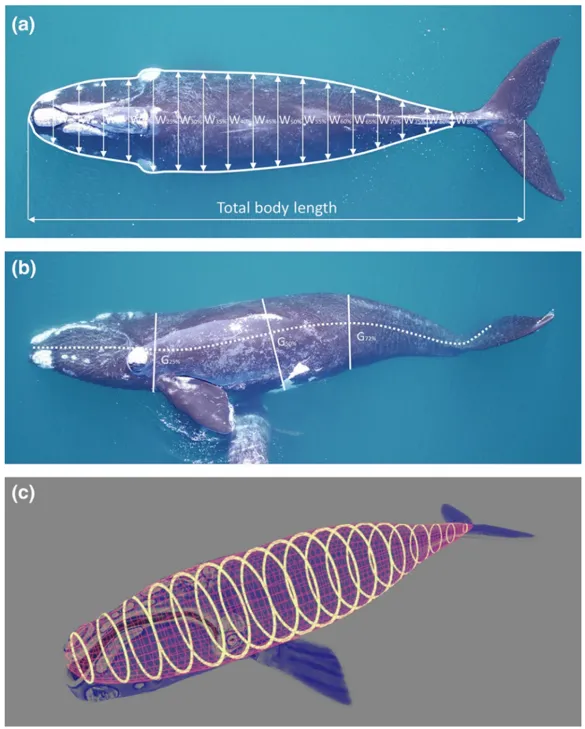Scientists can calculate the weight of southern right whales using drone footage, reports Methods in Ecology and Evolution.
In the past, the only way to find out the weight of a whale was to weigh dead or stranded individuals, a difficult and imperfect process.
This new technique allows for the measurement of live swimming whales without disturbing their natural behaviour.
Media captured by drones has enabled researchers to take body measurements of whales. This information is then processed by a computer model that can calculate the volume and mass of the cetaceans.
“Knowing the body mass of free-living whales opens up new avenues of research. We will now be able to look at known aged individuals to calculate their body mass increase over time and the energy requirements for growth,” explains lead author Fredrik Christiansen.
We will also be able to look at the daily energy requirements of whales and calculate how much prey they need to consume.
The footage detailed in this study was collected off the coast of Península Valdés in Argentina, an important breeding, calving and nursing area for southern right whales.
The unusually large congregation of whales, combined with the calm, clear waters made it an ideal place to capture a huge volume of high-quality footage.
“The noise level was below that of the background noise level in the ocean, hence it is very unlikely that the whales could hear the drone when flying above them,” says Christiansen.
He explains that the reaction of southern right whales was noted before and during controlled approaches with a drone: “We recorded the behaviour of the whales from land for 30 minutes before we flew a drone above them at 5m altitude for five minutes and we observed no changes in the behaviour of the whales.”
Researchers were able to collect dorsal and lateral images of 86 individuals and use these photos to obtain length, width and height measurements.
This information was then combined with data on known body volume parameters, allowing the scientists to calculate the density and mass of the whales.

“Weight measurements of live whales at sea inform how chronic stressors affect their survival and fecundity, as well as enabling accurate sedative dosing of animals entangled in fishing gear that are aversive to disentanglement attempts,” says Michael Moore, senior scientist at the Woods Hole Oceanographic Institution.
This new methodology can also be used to assess the long-term health of growing calves that are harassed and attacked by kelp gulls, who feed off the strips of skin and blubber they rip off their backs.
The full impact of this harassment on the long-term health of growing calves is not yet known. This new drone monitoring technique will allow researchers to track individual calves throughout their development, as well as to keep track of their weight and condition.

Read the full paper in Methods in Ecology and Evolution
Find out more about drones in animal research:
Main image: Southern right whale mother and calf. © Fredrik Christiansen. Photos/videos were taken under research permit.

